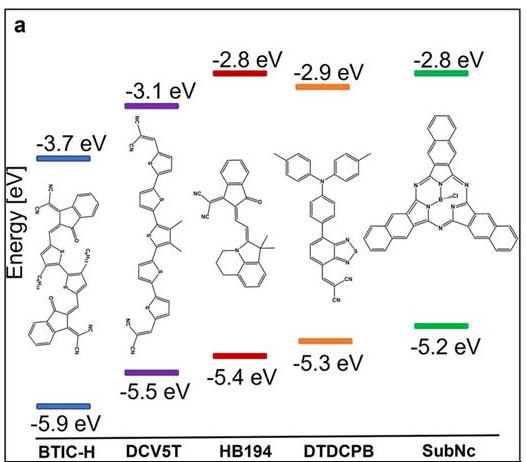Vacuum deposited organic solar cells with BTIC-H as A–D–A non-fullerene acceptor
Irfan Habib, Pascal Kaienburg, Dondong Xia, Olivia Gough, Ming Zhu, Joseph Spruce, Weiwei Li, Moritz Riede;
APL Mater. 1 June 2023; 11 (6): 061128.
https://doi.org/10.1063/5.0148208
The power conversion efficiency of solution-processed organic solar cells (OSCs) nearly doubled when non-fullerene acceptors (NFAs) replaced fullerene derivatives. However, this transition hasn't fully occurred in vacuum-thermal evaporated (VTE) OSCs because most NFAs are too large to evaporate without damage. We've fabricated VTE OSCs using BTIC-H, a smaller NFA, and observed promising results, highlighting the potential for high-performance VTE NFAs in OSCs.
How Paios was used
Open-circuit corrected charge carrier extraction was performed with Paios from Fluxim AG, Switzerland. The 60 nmthick BHJ samples were illuminated with a white LED light for 100 μs until a steady-state Voc was reached. Delay times were varied between a few μs and 1 ms. The linear voltage pulse (ramp rate of 200 and 400 V/ms) was chosen long enough (∼30 μs) such that all mobile carriers were extracted, and the current peak decayed to the displacement current obtained from a dark measurement with no offset voltage applied.

